Comments / Questions (15)
![]() Sylvie wrote:
Sylvie wrote:
Bonjour. Je suis entrain de faire la taille M . Le diagramme est sur 16 mailles et il est noté que les diagrammes de décalent de 2 mailles tricotées en jersey et répéter un nouveau rapport tous les 18 rangs. Je ne comprends pas vu que les diagrammes se font sur 16 rangs Merci pour votre aide.
07.02.2025 - 23:06DROPS Design answered:
Bonjour Sylvie, il vous faudra 18 rangs pour pouvoir avoir suffisamment de mailles pour commencer un nouveau motif du point ajouré. Bon tricot!
10.02.2025 - 09:15
![]() Sylvie wrote:
Sylvie wrote:
Bonjour. Je suis entrain de faire la taille M . Le diagramme est sur 16 mailles et il est noté que les diagrammes de décalent de 2 mailles tricotées en jersey et répéter un nouveau rapport tous les 18 rangs. Je ne comprends pas vu que les diagrammes se font sur 16 rangs Merci pour votre aide.
07.02.2025 - 23:05
![]() Mieke wrote:
Mieke wrote:
Dus bij naald 21 moet ik het patroon gaan herhalen?
02.01.2020 - 14:19DROPS Design answered:
Dag Mieke,
Ja, dat klopt, want je hebt een herhaling van 10 steken in de breedte en elke 2 naalden in de hoogte verschuift het patroon 1 steek.
08.01.2020 - 09:02
![]() Mieke wrote:
Mieke wrote:
Ik wil de trui in maat L gaan breien maar begrijp het patroon niet. Elke 20ste naald moet ik het patroon in de hoogte herhalen. Het patroon bestaat uit 18 nld. Hoe moet ik nld. 19 breien?
25.12.2019 - 17:52DROPS Design answered:
Dag Mieke,
Het lijkt er inderdaad op dat het niet klopt in de beschrijving wbt. het aantal naalden in de hoogte, dit moeten we even nakijken bij de design afdeling. Maar op zich heb je daar geen last van, want je kant het patroon gewoon voortzetten. Het idee is dat de omslag met de mindering steeds een steek opschuift en dat het aantal steken dat hiertussen zit gelijk blijft.
26.12.2019 - 16:18
![]() Berith wrote:
Berith wrote:
Når man tager ind til ærmegab på hø. forstykke, er det vel på hø. side at man tager 1 maske ind og modsatte side til v- halsen?
12.03.2015 - 12:38DROPS Design answered:
Hej Berith, højre forstykke (når du har det på). Dvs at højre side fra retsiden er mod midt foran og venstre side fra retsiden en mod ærmet. God fornøjelse!
21.05.2015 - 11:19
![]() Olivia wrote:
Olivia wrote:
When you are binding off the neck on the back of the sweater do you do the bind off on a RS or WS row?
18.04.2014 - 19:19DROPS Design answered:
Dear Olivia, depending on your tension and number of rows, you may reach the given measurement on a RS or on a WS row. Happy knitting!
19.04.2014 - 10:01
![]() Olivia wrote:
Olivia wrote:
If you repeat the m chart A1/A2 every 18th row you have 6 stitches between each new yarnover strip but 7 between the originals, should you introduce a new row every 20th set of stiches?
22.10.2013 - 05:00DROPS Design answered:
Dear Olivia, in size M, you work the 16 rows in diag + 2 more rows as before (with yo and dec) then start a new repeat on row 19 (back to row 1 in A1/A2). Happy knitting!
22.10.2013 - 21:01
![]() Vanhée wrote:
Vanhée wrote:
Bonjour ce modèle est super et doit être très léger à porter
18.06.2013 - 15:23
![]() Adelheid wrote:
Adelheid wrote:
Sieht toll aus
15.06.2013 - 18:51
![]() Herma Van Den Hoven wrote:
Herma Van Den Hoven wrote:
Ik kan niet wachten tot het patroon er is.Wat een mooi vest!!!
05.06.2013 - 10:47
Eva Jacket#evajacket |
|||||||||||||
|
|
|||||||||||||
Knitted DROPS jacket with lace pattern and ¾ sleeves in "Alpaca" and "Kid-Silk". Size: S - XXXL.
DROPS 149-4 |
|||||||||||||
|
GARTER ST (back and forth on circular needle): K all rows. 1 ridge = 2 rows K. PATTERN: See diagrams A.1 and A.2. The diagrams show all rows in pattern seen from RS. NOTE! See diagram for size! KNITTING TIP: When neck dec beg, continue lines with holes that have been started, but do not beg new lines with holes. NOTE: Make sure not dec for neck on the first 4 rows of diagram A.1/A.2. DECREASE TIP (applies to neck dec): Dec inside 2 sts in garter st. All dec are done from RS! Dec before 2 sts as follows: K 2 tog. Dec after 2 sts as follows: Slip 1 st as if to K, K 1, psso. BUTTONHOLE: Dec for buttonholes on right band from RS. 1 buttonhole = K tog third and fourth st from mid front and make 1 YO. Dec for buttonholes when piece measures: SIZE S: 4, 11, 18, 25, 32, 39 and 46 cm / 1½", 4⅜", 7", 9¾", 12½", 15¼" and 18" SIZE M: 6, 13, 20, 27, 34, 41 and 48 cm / 2⅜", 5⅛", 8", 10⅝", 13⅜", 16⅛" and 19" SIZE L: 7, 14, 21, 28, 35, 42 and 49 cm / 2¾", 5½", 8¼", 11" 13¾", 16½" and 19¼" SIZE XL: 9, 16, 23, 30, 37, 44 and 51 cm / 3½", 6 ¼", 9", 11 ¾", 14½", 17 ¼" and 20" SIZE XXL: 4, 11, 18, 25, 32, 39, 46 and 53 cm / 1½", 4⅜", 7", 9 ¾", 12½", 15 ¼", 18" and 21". SIZE XXXL: 5, 12, 19, 26, 33, 40, 47 and 54 cm / 2", 4¾", 7½", 10¼", 13" 15¾", 18½" and 21¼" ---------------------------------------------------------- BACK PIECE: Worked back and forth on circular needle. Cast on 93-95-107-115-125-137 sts on circular needle size 4 mm / US 6 with 1 strand of each yarn (= 2 strands). K 4 rows. Switch to circular needle size 5 mm / US 8. Work as follows from RS: 2-2-3-2-2-2 sts in stockinette st, diagram A.2 - see explanation above - over the next 44-45-50-55-60-66 sts (= 4-5-5-5-6-6 repetitions in width), 1 st in stockinette st, diagram A.1 over the next 44-45-50-55-60-66 sts (= 4-5-5-5-6-6 repetitions in width) and finish with 2-2-3-2-2-2 sts in stockinette st. Pattern A.1/A.2 is displaced out to the 2-2-3-2-2-2 sts in the side worked in stockinette st until finished measurements. Work 1 new repetition of A.1/A.2 vertically every 22nd-18th-20th-22nd-20th-22nd row. Work like this until piece measures 45-46-47-48-49-50 cm / 17¾"-18"-18½"-19"-19¼"-19¾". Then bind off 1-1-1-2-2-4 sts for armhole in each side = 91-93-105-111-121-129 sts. Continue pattern but work the outermost 5 sts in each side in stockinette st until finished measurements. When piece measures 57-59-61-63-65-67 cm / 22½"-23¼"-24"-24¾"-25½"-26⅜" – read KNITTING TIP, work 1 ridge in garter st over the middle 27-27-29-29-29-29 sts (= 32-33-38-41-46-50 sts on each side), work the other sts as before. Then bind off the middle 23-23-25-25-25-25 sts for neck = 34-35-40-43-48-52 sts remaining on each shoulder. Now finish each shoulder separately. Continue with garter st over the 2 outermost sts towards neck, pattern and 5 sts in stockinette st. When piece measures 59-61-63-65-67-69 cm / 23¼"-24"-24¾"-25½"-26⅜"-27⅛", work 2 rows in stockinette st with 2 sts in garter st in each side of neck. Bind off. Piece measures 60-62-64-66-68-70 cm / 23⅝"-24⅜"-25¼"-26"-26¾"-27½". RIGHT FRONT PIECE: Worked back and forth on circular needle. Cast on 51-52-58-62-67-73 sts (includes 5 band sts) on circular needle size 4 mm / US 6 with 1 strand of each yarn (= 2 strands). Work 2 ridges in garter st. Switch to circular needle size 5 mm / US 8. Work as follows from RS: 5 sts in garter st (= band sts), then work diagram A.1 over the next 44-45-50-55-60-66 sts (= 4-5-5-5-6-6 repetitions in width), finish with 2-2-3-2-2-2 sts in stockinette st. Pattern A.1 is displaced out to the 2-2-3-2-2-2 sts in stockinette st. Work 1 new repetition of A.1 vertically every 22nd-18th-20th-22nd-20th-22nd row. When piece measures 4-5-6-9-4-6 cm / 1½"-2"-2⅜"-3½"-1½"-2⅜", dec for BUTTON HOLES - see explanation above. Continue pattern like this until piece measures 45-46-47-48-49-50 cm / 17¾"-18"-18½"-19"-19¼"-19¾". Then bind off 1-1-1-2-2-4 sts for armhole in left side = 50-51-57-60-65-69 sts. Continue pattern but work the outermost 5 sts in left side in stockinette st until finished measurements. When piece measures 47-49-50-52-54-55 cm / 18½"-19¼"-19¾"-20½"-21¼"-21⅝"- remember knitting tip - bind off the 3 outermost band sts in the right side = 47-48-54-57-62-66 sts remain on needle. Continue to work in garter st over the 2 outermost band sts towards the neck, pattern and 5 sts in stockinette st, AT THE SAME TIME on next row from RS dec 1 st for neck inside the 2 band sts in garter st - read DECREASE TIP, repeat dec on every row from RS 12-12-13-13-13-15 more times (= 13-13-14-14-14-16 times in total) = 34-35-40-43-48-50 sts remain on the shoulder. Bind off when piece measures 60-62-64-66-68-70 cm / 23⅝"-24⅜"-25¼"-26"-26¾"-27½". LEFT FRONT PIECE: Cast on and work the same way as on right front piece but reversed - i.e. work A.2 instead of A.1. Do not dec for buttonholes. SLEEVE: Worked back and forth on circular needle. Cast on 42-42-44-48-48-50 sts on circular needle size 4 mm / US 6 with 1 strand of each yarn (= 2 strands). Work 2 ridges in garter st. Switch to circular needle size 5 mm / US 8 and work in stockinette st. When piece measures 3 cm / 1", inc 1 st in each side, repeat inc every 7-6-4-4-3-3 cm / 2 ¾"-2⅜"-1½"-1½"-1⅛"-1⅛" 4-5-6-6-8-8 more times (= 5-6-7-7-9-9 times in total) = 52-54-58-62-66-68 sts. Work in stockinette st until piece measures 35-35-33-32-30-29 cm / 13¾"-13¾"-13"-12½"-11¾"-11⅜". Bind off. Knit another sleeve. ASSEMBLY: Sew the shoulder seams. Sew in sleeves. Sew sleeve and side seam in outer loop of edge sts. Sew the buttons on to left front piece. |
|||||||||||||
Diagram explanations |
|||||||||||||
|
|||||||||||||
 |
|||||||||||||
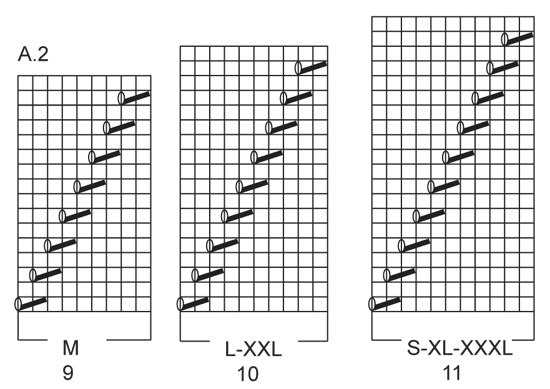 |
|||||||||||||
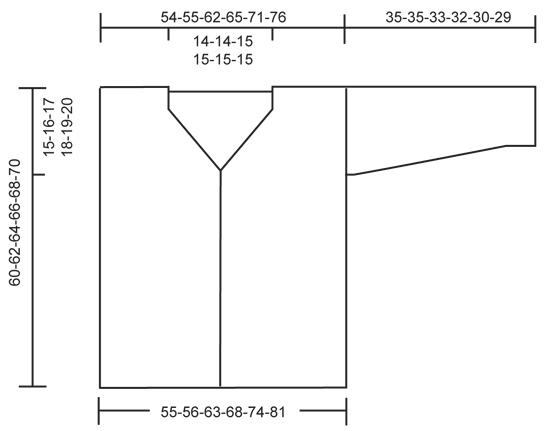 |
|||||||||||||
Have you finished this pattern?Tag your pictures with #dropspattern #evajacket or submit them to the #dropsfan gallery. Do you need help with this pattern?You'll find 15 tutorial videos, a Comments/Questions area and more by visiting the pattern on garnstudio.com. © 1982-2026 DROPS Design A/S. We reserve all rights. This document, including all its sub-sections, has copyrights. Read more about what you can do with our patterns at the bottom of each pattern on our site. |
|||||||||||||
















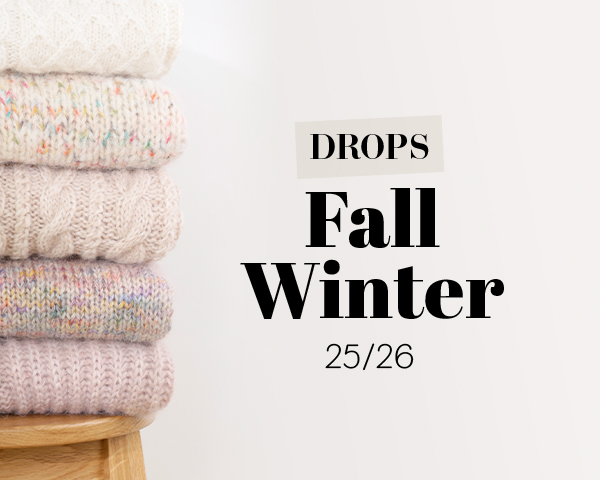


































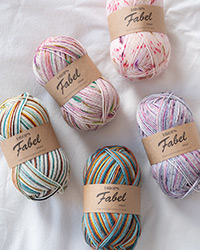
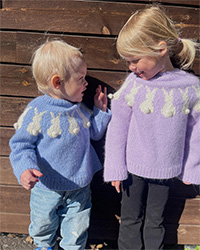
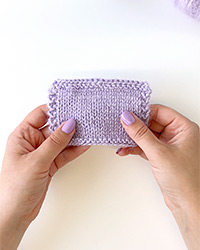
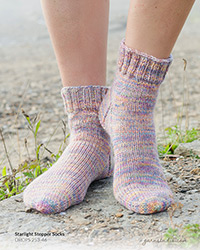
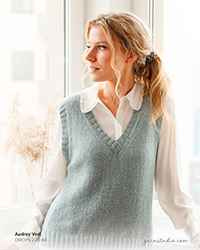

Post a comment to pattern DROPS 149-4
We would love to hear what you have to say about this pattern!
If you want to leave a question, please make sure you select the correct category in the form below, to speed up the answering process. Required fields are marked *.